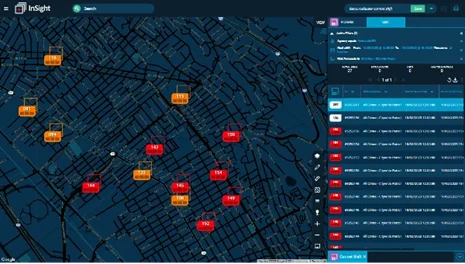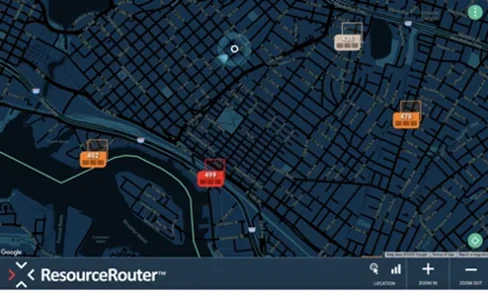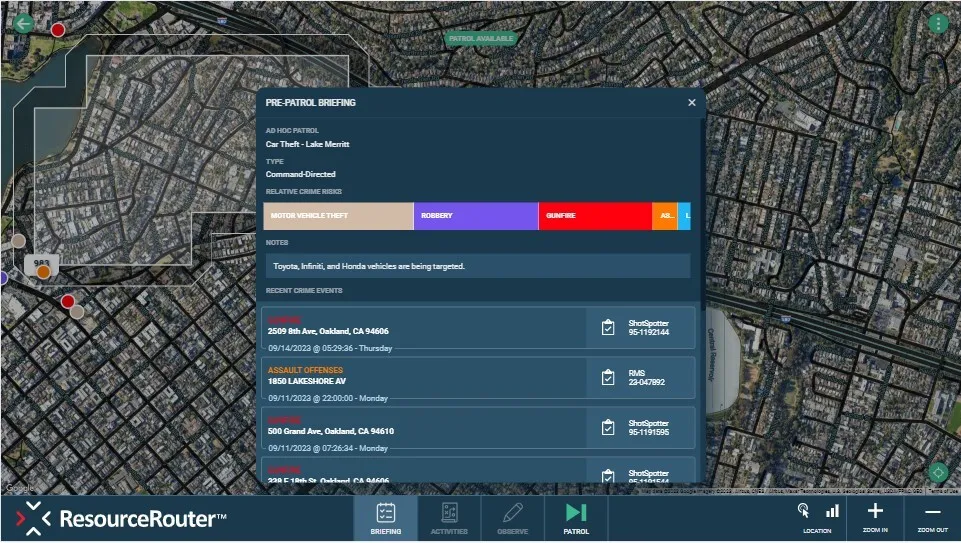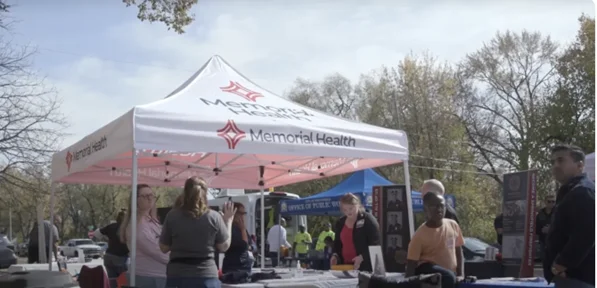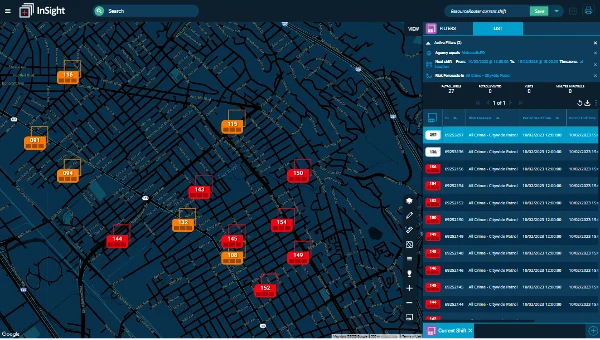Predictive policing software uses data analytics and machine learning to forecast where and when crimes are likely to happen, allowing officers to be deployed more strategically. Often touted as a solution for law enforcement agencies dealing with limited resources, predictive policing has faced significant criticism over potential biases and unfair practices.
Many predictive policing systems rely solely on historical crime and arrest data, including low-level offenses subject to enforcement bias, to train their algorithms. Additionally, these systems lack protections against police oversaturation, transparency, or accountability for the tactics used upon police arrival. This reliance on skewed data and the absence of protective measures can cause the algorithm to flag minority neighborhoods, perpetuating longstanding racial biases in policing. This perpetuates the cycle of over-policing in these communities, burdening innocent residents with increased stops, questioning, and use of force.
The ResourceRouter Alternative
Maximize Limited Resources with ResourceRouter™ Overview
In contrast, ResourceRouter provides a comprehensive patrol management solution that avoids perpetuating biases of traditional predictive policing models. Its data-driven approach analyzes crime incidents alongside non-crime data to objectively identify high-risk areas each shift. This lays the foundation for ResourceRouter to address key challenges agencies face more effectively and equitably than other solutions.
Patrol Resource Challenges
When considering a tool like ResourceRouter, police departments often grapple with scenarios like:
- Crime analysts spending countless hours manually analyzing data and making hotspot maps. By the time their reports are ready, the data is often outdated and provides little value. There’s also no way to track if officers acted on the hotspots or measure the impact.
- Beat officers without a reliable data system to guide them have no effective way to determine the optimal locations where they should spend uncommitted time, resulting in patrolling based on personal experience and “gut instincts” rather than analytics – an approach that can be ineffective and lead to over-policing perceptions.
- Supervisors and command staff lacking visibility into how officers spend uncommitted time and what proactive activities they do to deter crime. This accountability gap minimizes deterrence impact and opens the door to community scrutiny.
- Agencies struggling to truly operate in a “data-driven” model they aspire to due to lack of resources and overstretched crime analysts. This hinders optimized resource deployment.
- Leaders lacking the means to effectively communicate priorities, especially given lack of resources.
Leadership lacking the bandwidth needed to implement proactive crime reduction initiatives, preventing crime from being addressed at a more holistic, impactful level.
Note: ResourceRouter was built to help combat the scenarios identified above. You can read about it in detail below or reach out to our sales team if you want to see exactly how it can help improve your agency’s approach to patrol management.
Key Feature #1: Automated Crime Patrol Plans That Result in Time Savings for Analysts
ResourceRouter harnesses the power of machine learning to generate optimal, automated directed patrol plans. Unlike traditional predictive policing systems that often rely on biased arrest data and demographic information, ResourceRouter avoids these pitfalls by analyzing a curated blend of objective data, including comprehensive historic crime data, weather, events, and environmental variables.
Its analytics engine generates patrol plans that change with each shift, updated daily to align with the most current crime trends and peak risk periods across different crime types. The system automatically generates a specified number of directed patrol areas based on time-of-day data and displays color-coded patrol zones tailored for each shift. The time-saving benefits of ResourceRouter can make a noticeable impact in crime prevention, even in agencies experiencing a staffing shortage.
An example of an automated Directed Patrol Plan. With ResourceRouter, command staff and crime analysts have a daily, shift-specific patrol plan that may have previously taken hours to put together manually.
This systematic process ensures strategic deployment of resources to high-risk areas with precision, offering a stark contrast to manual hotspot analysis that can quickly become outdated. By automating the process, ResourceRouter creates up to 80% time savings for crime analysts each week ensuring analyst time is utilized on other priorities that leverage their expertise.
Key Feature #2: Data-Driven Directed Patrols That Maximize Officer Impact, and Comprehensive Reporting That Increase Accountability
ResourceRouter replaces the subjective “gut instinct” patrolling with a transparent, analytical methodology. Officers receive automated directed patrol assignments and contextual intelligence briefings tailored to their designated patrol areas. This data-driven approach aims to focus enforcement presence more precisely on areas with elevated crime risks, potentially mitigating the over-policing of certain neighborhoods that can occur with traditional patrolling methods.
An automated directed patrol map is available on mobiles or MDTs. The system
automatically generates color-coded directed patrol areas based on high-probability
crime areas and includes a directed patrol meter to easily track visits.
ResourceRouter’s robust reporting capabilities enable leadership to continuously refine patrol tactics based on empirical results. It tracks officer activities, time spent in designated risk zones, and compliance with the data-driven plans. This transparency allows police leadership to continuously evolve patrol tactics and best practices based on empirical results from the field. The robust reporting function increases accountability by allowing accurate monitoring and reporting of patrol metrics. This empirical approach empowers leadership to continuously refine and optimize patrol tactics, resource allocation, and overall operational effectiveness based on analysis of real-world outcomes.
Key Feature #3: Ad Hoc Patrol Creation and Reporting for Effective Response to Crime
An Ad Hoc patrol in the ResourceRouter app. With this feature, crime analysts can designate an area to be a patrolling priority based on recent crime events (such as a string of car thefts in the same area).
In sharp contrast to traditional predictive policing, which struggles with agility and responsiveness, ResourceRouter enables command staff to rapidly create and disseminate ad hoc temporary patrol assignments at a moment’s notice. With ResourceRouter Ad Hoc patrols, agencies can quickly direct and track the presence of resources in a designated area that they wouldn’t have been able to before. Such examples include an area that has become high-risk rather suddenly an area that may need special attention for a period of time due to a known upcoming event (such as a weekend-long music festival or a planned protest.)
Ad Hoc patrols also have robust reporting such that command staff can view activity across multiple ad hoc patrols in both a summarized and detailed view. This allows command staff to determine if appropriate resources were provided in the designated area(s). With the flexibility and reporting capabilities of the ad hoc patrol feature, ResourceRouter’s Ad Hoc patrol functionality helps agencies more quickly prepare, respond, and manage a variety of dynamic situations as they arise.
Key Feature #4: Impactful Community Events That Tackle Root Causes of Crime Alongside Key Non-Law Enforcement Stakeholders
Unlike traditional predictive policing, which often leads to over-policing and exacerbates strained police-community relations, ResourceRouter leverages continuously updated crime risk assessments to enable agency leadership to pinpoint the specific neighborhoods most impacted by criminal activities. This data-driven visibility facilitates proactive coordination with relevant community stakeholders, such as social services, public works, and neighborhood groups.
A picture from the Memorial Health booth at Community Connections
The Build Springfield initiative in Springfield, IL is a good example of this concept in action. In 2022, the City of Springfield hosted Community Connections, an event for community members from a 49-square-block area that the ResourceRouter system identified as especially high risk. Small groups consisting of police officers, social services workers, public works employees, and more walked around the neighborhood, going door-to-door to find out what the city could do for them.
In many cases, actions were taken right then and there, like filling in a trench that the resident had not been able to get the city to address previously. In addition, a variety of groups were present at the event, including representatives from school mentorship programs, a healthcare organization, a library, and more. This contributed to an improved sense of well-being in the community, and a greater sense of trust and camaraderie between law enforcement, community members, and other key organizations.
Conclusion
As law enforcement agencies grapple with resource constraints and high crime rates, ResourceRouter offers a progressive, data-driven software solution that transcends many of the pitfalls of traditional predictive policing tools. By emphasizing fairness through objective data analysis and fostering stronger community engagement, ResourceRouter enhances operational effectiveness and efficiency while fortifying public trust – a pivotal step towards developing equitable and impactful public safety strategies.

